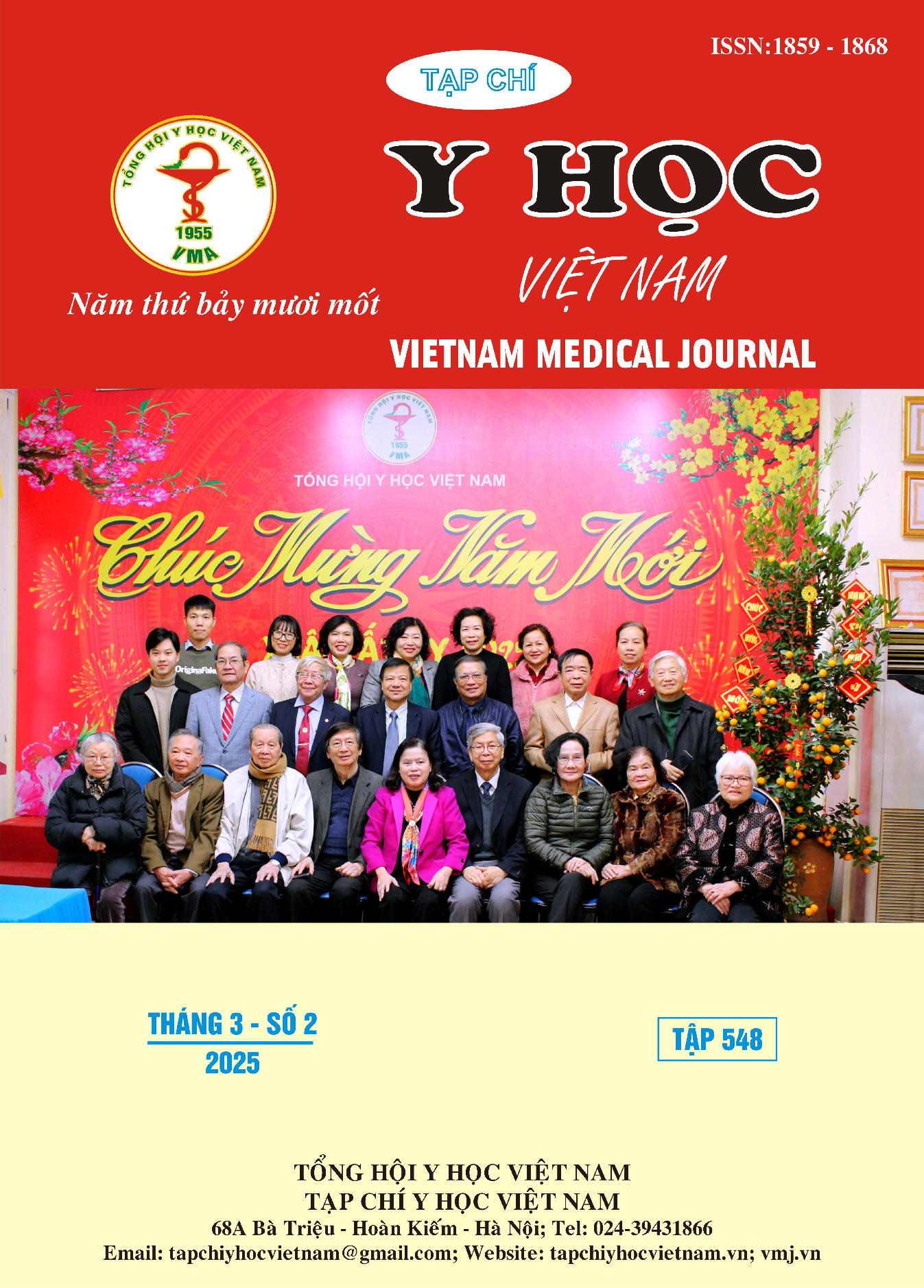BƯỚC ĐẦU KHẢO SÁT BIỂU HIỆN HOÁ MÔ MIỄN DỊCH CỦA SLAIN2 TRÊN BỆNH NHÂN UNG THƯ BIỂU MÔ TẾ BÀO GAI NIÊM MẠC MIỆNG
Nội dung chính của bài viết
Tóm tắt
Mở đầu: SLAIN2 (SLAIN motif-containing protein 2) là một protein đóng vai trò quan trọng trong việc điều chỉnh hình thái và di chuyển của tế bào, có mức độ biểu hiện khác nhau tủy vào từng loại ung thư. Tuy nhiên chưa có nghiên cứu nào về biểu hiện của SLAIN2 trên bệnh nhân ung thư biểu mô tế bào gai niêm mạc miệng (OSCC). Mục tiêu nghiên cứu: Bước đầu khảo sát biểu hiện và phân tích mối liên quan giữa mức độ biểu hiện SLAIN2 với các đặc điểm lâm sàng và mô bệnh học trong OSCC. Phương pháp: Nghiên cứu hồi cứu trên 52 mẫu mô bệnh phẩm đúc nến của bệnh nhân OSCC đến khám và điều trị tại Bệnh viện Ung bướu TPHCM. Các mẫu bệnh phẩm được cắt lát dày 3-4µm, nhuộm Hematoxylin-Eosin (HE) và nhuộm hóa mô miễn dịch với kháng thể đa dòng SLAIN2 để xác định mức độ biểu hiện SLAIN2 thông qua chỉ số H. Kết quả: Tỷ lệ biểu hiện SLAIN2 trong nghiên cứu là 30% biểu hiện mạnh và 70% biểu hiện yếu. Tiền sử hút thuốc và uống rượu có ảnh hưởng đến mức độ biểu hiện SLAIN2, trong đó nhóm bệnh nhân hút thuốc, uống rượu có biểu hiện SLAIN2 cao hơn có ý nghĩa so với nhóm không hút thuốc, uống rượu (p<0,05). Tỷ lệ di căn hạch lâm sàng ở nhóm biểu hiện SLAIN2 mạnh là 69,2%, trong khi ở nhóm có biểu hiện SLAIN2 yếu là 53.8% (p=0,037). Kết luận: Biểu hiện của SLAIN2 có thể ảnh hưởng đến tình trạng di căn hạch đối với bệnh nhân OSCC thông qua tác động lên cơ chế xâm lấn của tế bào ung thư, từ đó ảnh hưởng đến tiên lượng và diễn tiến của bệnh.
Chi tiết bài viết
Từ khóa
SLAIN2, Hoá mô miễn dịch, Ung thư biểu mô tế bào gai niêm mạc miệng, OSCC
Tài liệu tham khảo
2. Chaffer CL, Weinberg RA. A perspective on cancer cell metastasis. Science. Mar 25 2011; 331(6024): 1559-64. doi:10.1126/science. 1203543
3. Wang W, Li W, Pan L, et al. Dynamic Regulation Genes at Microtubule Plus Ends: A Novel Class of Glioma Biomarkers. Biology (Basel). Mar 22 2023;12(3)doi:10.3390/biology 12030488
4. Zhuang M, Zhao S, Jiang Z, et al. MALAT1 sponges miR-106b-5p to promote the invasion and metastasis of colorectal cancer via SLAIN2 enhanced microtubules mobility. EBioMedicine. Mar 2019;41: 286-298. doi:10.1016/j.ebiom. 2018.12.049
5. Duong HT, Huynh NC-N, Nguyen CT-K, et al. Identify characteristics of Vietnamese oral squamous cell carcinoma patients by machine learning on transcriptome and clinical-histopathological analysis. Journal of Dental Sciences. 2024/12/01/ 2024;19:S81-S90. doi: https://doi.org/10.1016/j.jds.2024.08.013
6. Clark AG, Vignjevic DM. Modes of cancer cell invasion and the role of the microenvironment. Curr Opin Cell Biol. Oct 2015;36:13-22. doi:10.1016/j.ceb.2015.06.004
7. Bouchet BP, Noordstra I, van Amersfoort M, et al. Mesenchymal Cell Invasion Requires Cooperative Regulation of Persistent Microtubule Growth by SLAIN2 and CLASP1. Dev Cell. Dec 19 2016; 39(6): 708-723. doi:10.1016/j.devcel. 2016.11.009
8. Bose M, Barman B, Goswami A, Bhattacharyya SN. Spatiotemporal Uncoupling of MicroRNA-Mediated Translational Repression and Target RNA Degradation Controls MicroRNP Recycling in Mammalian Cells. Mol Cell Biol. Feb 15 2017;37(4)doi:10.1128/MCB.00464-16


